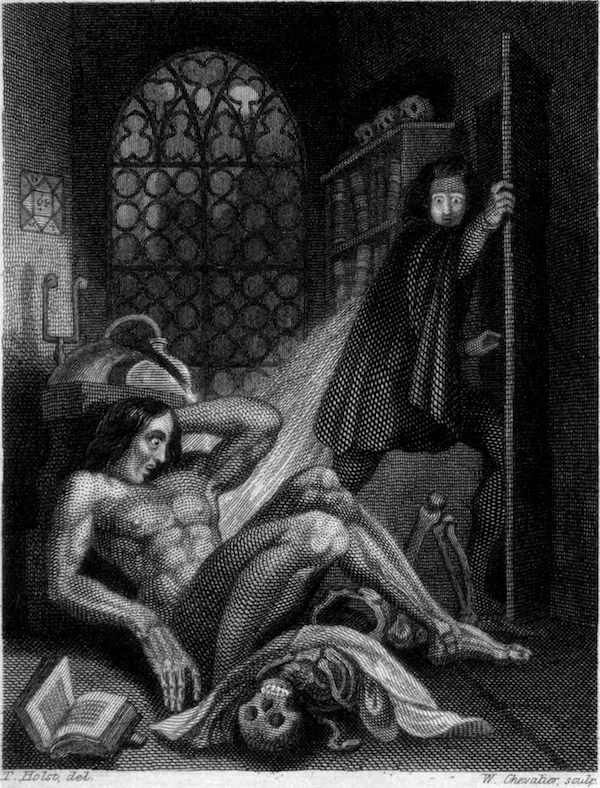No sympathy may I ever find. […] The fallen angel becomes a malignant devil. Yet even that enemy of God and man had friends and associates in his desolation; I am alone.
Frankenstein’s monster—the miserable creature that Mary Wollstonecraft Shelley dreamed up before she even envisioned his maker—has always felt misunderstood. Shunned by society, turned bitter by rejection and fear, denied his request of a mate, this creation feels truly alone in the world—a theme that has resonated through two hundred years’ worth of updates and adaptations.
From the formula of a family-friendly sitcom to the pages of a comic book, whether drawing from Shelley’s original text or riffing upon the archetypal Universal Pictures monster, these five stories recontextualize Frankenstein within contemporary conversations about war and annihilation, sexuality and gender identity, artificial intelligence and humanity. In some retellings, the “monster” yearns for acceptance, while others reject the entire systems in which they are written—all doing their part to keep Mary Shelley’s horror story relevant today.
The Munsters
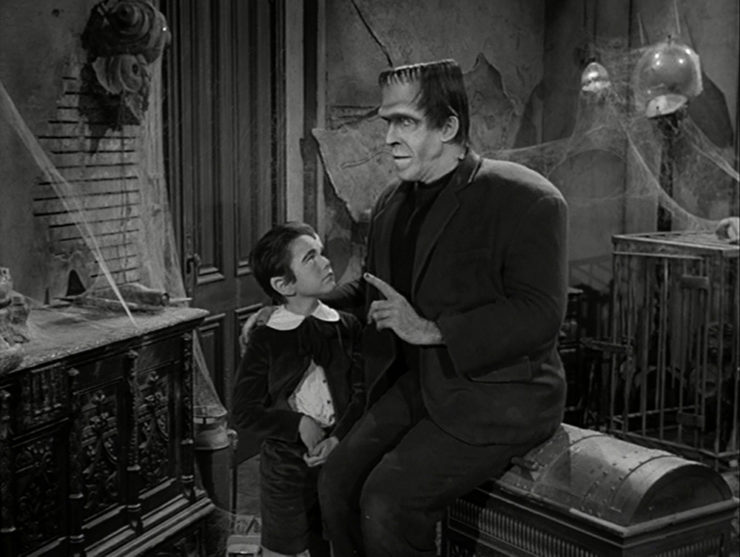
1960s American family values
In the early 1960s, Universal was trying to think of fresh ways to mine its stable of classic monster movies, already several decades out from defining performances like Boris Karloff’s Frankenstein’s monster and Bela Lugosi’s Dracula. But instead of rebooting those black-and-white horror stories, the studio went for something entirely different: a tongue-in-cheek satire of contemporary series like The Donna Reed Show, but about a family of monsters. Despite the family background straight out of a spooky double-feature—Herman Munster, neck bolts and all; his vampiric wife Lily; and their growing wolfboy Eddie—the Munsters were treated like any other blue-collar, suburban neighbor. The plotlines were ordinary, and therefore relatable: work parties, camping trips, Thanksgiving. According to a Mental Floss article, the creators included these soothing details in order to prevent children from being frightened by monsters on their TVs. However, it’s also worth noting that the series was created in 1964, just a few years after the paranoia of the Second Red Scare; presenting the “other” as familiar in this era doesn’t seem like a coincidence.
The Rocky Horror Picture Show
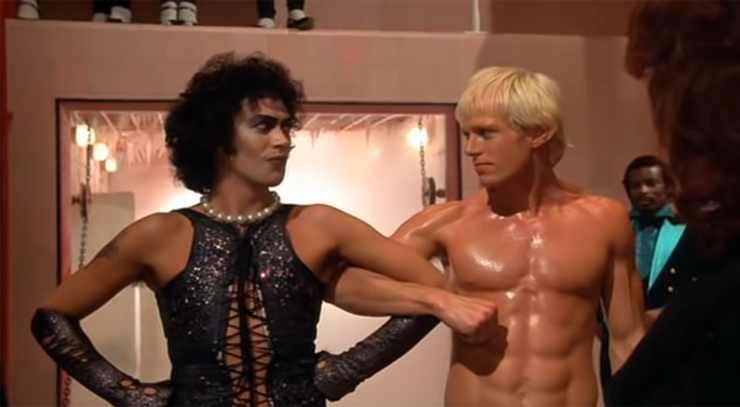
1970s institutionalized homophobia
As the Horror Homeroom podcast points out, Richard O’Brien’s 1973 musical stage show premiered six years after the UK’s Sexual Offences Act of 1967, which decriminalized homosexual acts in private. However, in the passing of that bill, the Earl of Arran added this (in his words, earnest) request that gay men “show their thanks by comporting themselves quietly and with dignity. This is no occasion for jubilation; certainly not for celebration. Any form of ostentatious behaviour; now or in the future, any form of public flaunting, would be utterly distasteful and would, I believe, make the sponsors of the Bill regret that they have done what they have done.” Is it any surprise, then, that O’Brien’s stage musical, and its 1975 cult film adaptation, defiantly flaunts and celebrates its queerness with such abandon? The story beats have their familiar roots in Frankenstein: the mad scientist (Dr. Frank N. Furter) clashes with his idealized creation (Rocky), who rues his birth, for he will never be understood. But Transsexual Transylvanian Frank also sashays out in a corset and fishnets to the song “Sweet Transvestite,” and seduces both straight-laced Janet and Brad in order to expand their horizons beyond heterosexuality, monogamy, and the gender binary. In many ways, Rocky’s birth is the least radical part of this cult classic.
Frankenstein in Baghdad by Ahmed Saadawi
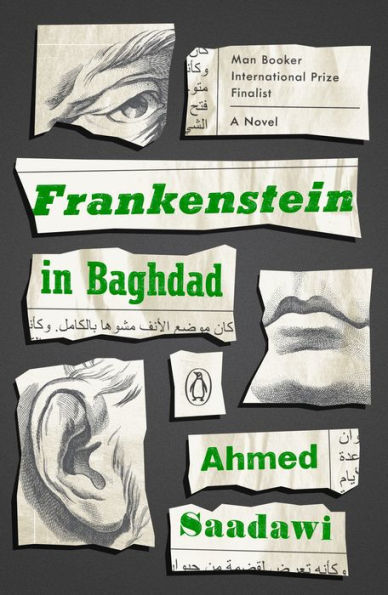
U.S. occupation of Iraq
Saadawi’s 2013 novel takes place in the violent streets of 2005 U.S.-occupied Baghdad, as peddler Hadi picks up limbs strewn everywhere from car bombs and other explosions the way that he normally would pick up junk or secret artifacts. In stitching together these body parts from numerous anonymous victims, Hadi hopes to construct one corpse that will be buried by the proper authorities. Instead, his creation comes to life and pursues not Hadi but his more existential maker—the men who created the bombs that blew apart victims and criminals alike. This vigilante, known only as the “whats-its-name,” becomes an urban legend, a creature of lore, a commentary on both the disruptive foreign occupation and on Iraq’s own struggles for unity. Constructed from bodies of different races, religious affiliations, and social classes, the whats-its-name considers itself “the first true Iraqi citizen.” In an interview, Saadawi reflects that the creature is really “the fictional representation of the process of everyone killing everyone.”
Buy the Book


Frankenstein in Baghdad
Destroyer by Victor LaValle and Dietrich Smith
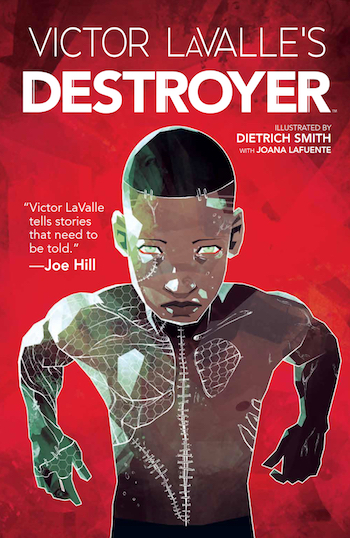
Black Lives Matter
Doctor Josephine Baker, the last living descendant of Victor Frankenstein, finds herself forced to emulate her infamous ancestor when her twelve-year-old son Akai is murdered by a policeman. Using nanotechnology and cybernetic implants, she is able to resurrect Akai as a cyborg, but the young boy’s second chance at life is threatened by the reappearance of his absentee dad—wearing a mecha suit dubbed the Bride—and a shadowy government organization trying to track down Frankenstein’s original Monster, lurking in Antarctica. Despite these connections to the original text (updated to address climate change as well), the crux of the six-issue miniseries is Jo’s grief, transformed into rage, as the mother of a black boy gunned down for no crime beyond the color of his skin. LaValle named Akai after shooting victim Akai Gurley, and drew from real 911 calls to construct the point of no return: when a neighbor spots Akai carrying his baseball bat home from Little League practice and instead sees a man with a rifle, a supposed threat to the community. In the same way that it tracks the cycle of death to life, Destroyer turns mourning into a need to burn it all down.
Buy the Book


Destroyer
Frankissstein by Jeanette Winterson
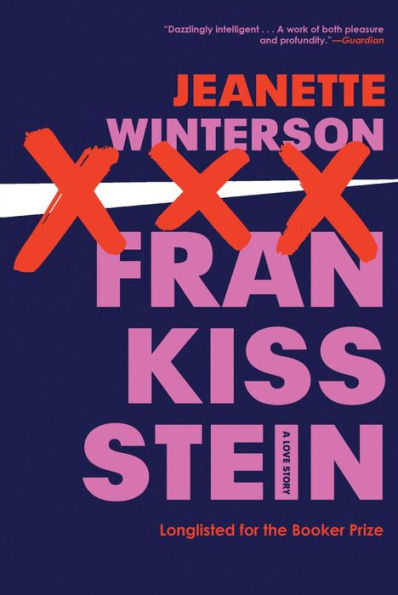
Transhumanism
Aside from reanimation, Winterson’s inventive novel also concerns itself with the notion of reincarnation. In 1816, Mary Shelley and her husband Percy Shelley suffer the company of Lord Byron, Doctor Polidari, and her stepsister Claire in a damp villa, as Mary experiences the first vision that inspires her immortal story. In 2019, Doctor Ry Shelley, a trans man, encounters sleazy entrepreneur Ron Lord and his sexbot Claire, pushy journalist Polly D—and the alluring, seemingly ageless scientist Victor Stein, obsessed with eternal life of the mind, released from the shackles of the body. Amid ethical arguments about cryogenics and robots as simultaneously job-stealers and sex toys, Ry and Victor debate whether the future of humanity is found in changing our bodies or transcending them altogether. Writing in an age of political and global uncertainty, Winterson examines the ways in which history repeats itself, especially in questions of what makes us human and therefore what we must take with us (and what we must leave) into the future.
Buy the Book


Franissstein
Natalie Zutter was going to say she was holding out for a proper Mary Shelley biopic, but now all Hollywood has to do is adapt Frankissstein. Share your favorite Frankenstein retelling with her on Twitter!










